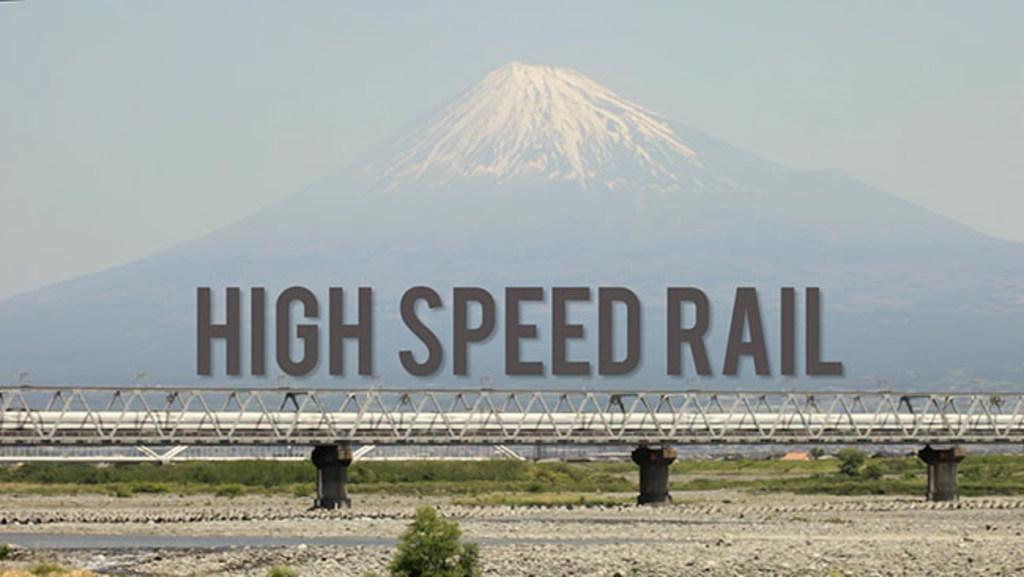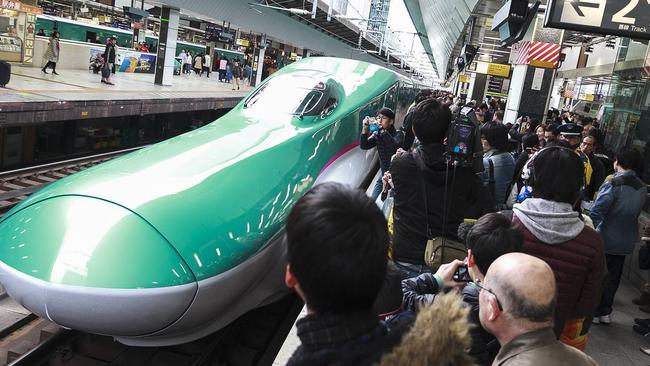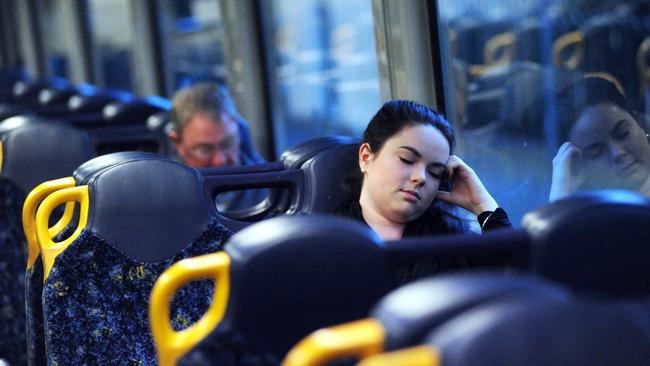Tell him he’s dreaming! Why Malcolm Turnbull’s plan for high speed rail is a joke
HIGH speed rail is awesome. Amazing. Breathtaking. But this is why you should hope Australia never, ever gets it.

HAVE you ever taken high-speed rail? I have. A few years ago I got over 300km/h on China’s Harmony system. It was awesome. Amazing. Breathtaking.
I hope Australia never, ever gets one.
Australia has high wages and strong environmental laws. Nobody would argue against that. But what makes us wealthy and healthy also comes with trade-offs.
For example, we can’t build high-speed rail as easily as China, despite what Malcolm Turnbull might want us to believe in the shadow of an election.

THE TICKET PRICE PROBLEM
The planned high-speed rail network from Melbourne to Brisbane and would cost about $114 billion, or about $5000 per Australian.
Let’s assume that the government is happy to build it and never actually pay the cost back. Let’s assume they only want enough to pay the interest on the money to build it.
If the government borrows $114 billion, the interest cost would be about $3 billion a year. So a high-speed rail would need to make $3 billion in profit a year.
Let’s say it makes 25 per cent profit (very generous!). The system must therefore make revenues of $12 billion. (That is $9 billion to cover costs, including staff, maintenance on trains and track, etc, and $3 billion of cream on top.) How many tickets would it need to sell?
If it sells tickets at $1000 one way, it needs to sell 12 million tickets. That works out at 33,000 Aussies per day using the network.
Is that plausible? Nope. At the moment, just 44,000 people fly between the three cities of Melbourne, Brisbane and Sydney. There might be enough demand if you could tempt three quarters of them to use the train. But at $1000 a ticket, I know I’d still choose to fly.
You know the govt is in trouble when they trot out the high speed train.
— Bradley B Bear (@BradSkid) April 11, 2016
If #nbn is a guide it will be horse powered https://t.co/1TIGJmtOkQ
WOULD CHEAP TICKETS WORK?
What if prices were more competitive with airlines? If the ticket price was $150 each way, you’d need to sell 80 million tickets.
That’s 219,000 people using the network every day. Australia’s population would need to be probably four times bigger before that’s ever going to happen.
Remember, even if a fast train existed, some people would still fly. Flying would still actually be faster. Melbourne to Sydney in two hours and 44 minutes is not actually very quick. (Even Qantas Dash-8 propeller planes cruise at 500km/h, faster than a Shinkansen at 320km/h).
Train stations are easier to get through than airports, but a terrorist attack could easily change that; or airports might make check-in faster if they were losing market share to rail.
Lastly, let’s not forget the cost of building a giant project almost never comes in below the estimate. It almost always blows out instead.

OTHER COSTS AND BENEFITS
A train would not provide enough value to passengers in the big cities. Are there any other reasons to build it?
A real benefit of high-speed rail is making Australia’s country towns and non-capital cities better connected. High speed rail could be great for Wagga Wagga, Albury-Wodonga, Port Macquarie, etc.
Of course, the more often trains stop at country towns, the slower they go. And not everywhere is along the way. Sorry, Dubbo. So there is a trade-off between trains that help the country and trains that are going to be attractive to lots and lots of passengers.
The other reason to build a fast train is they run on electricity, which you can make clean and carbon-emission free, unlike jet fuel. But the global carbon price would need to rise a lot — an awful lot — to make it worthwhile. Plus if you’re talking environment you’d have to take into account all the farmland and forest you’re running rails through.
VALUE — IS IT WORTH WORRYING ABOUT?
Of course the government can build something and not worry about whether it gets value from it. High-speed rail fans like to say we should just build it and not mess around with annoying time-wasting habits like thinking.
But if the government spends without thinking, all of a sudden it has spent all our taxes and we didn’t get anything back.
FINE! WHAT ARE WE GOING TO DO TO FIX THIS COUNTRY?
High-speed rail is a solution looking for a problem. It’s an episode of the satirical show Utopia, come to life. We’re better off looking at actual problems and seeing if we can solve them.
Anyone who has ever tried to get to work in the morning can probably think of something worth trying to fix — traffic. Our streets are clogged with cars and our public transport systems are not a good enough alternative.
Rather than confuse and distract us with airy pre-election promises, could the government please spend some time thinking about that?
Jason Murphy is an economist. He publishes the blog Thomas The Thinkengine.
Follow Jason on Twitter @Jasemurphy




